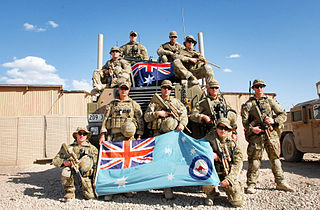
Airfield Defence Guards (ADG) are a mustering of the Royal Australian Air Force (RAAF) that are dedicated to the security and ground defence of airbases and other military aviation assets. Other duties include training other RAAF personnel, in skills such as the handling of small arms and infantry tactics. They do not, however, operate anti-aircraft artillery or missiles.
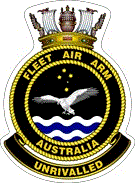
The Fleet Air Arm (FAA), known formerly as the Australian Navy Aviation Group, is the division of the Royal Australian Navy (RAN) responsible for the operation of aircraft. The FAA was founded in 1947 following the purchase of two aircraft carriers from the Royal Navy. FAA personnel fought in the Korean War and the Vietnam War, and participated in later conflicts and operations from host warships.

No. 3 Squadron is a Royal Australian Air Force (RAAF) fighter squadron, headquartered at RAAF Base Williamtown, near Newcastle, New South Wales. Established in 1916, it was one of four combat squadrons of the Australian Flying Corps during World War I, and operated on the Western Front in France before being disbanded in 1919. It was re-established as a permanent squadron of the RAAF in 1925, and during World War II operated in the Mediterranean Theatre. The Cold War years saw the squadron disbanded and re-raised twice. It was based at RAAF Butterworth during the Malayan Emergency and the Indonesia–Malaysia Konfrontasi. Equipped with McDonnell Douglas F/A-18 Hornet multi-role fighters from 1986, the squadron deployed to Diego Garcia in 2002 to provide local air defence, and the following year contributed aircraft and crews to the invasion of Iraq as part of Operation Falconer. In April 2016, it deployed to the Middle East as part of the military intervention against ISIL. The squadron began re-equipping with Lockheed Martin F-35 Lightning II multi-role fighters in 2018.

No. 11 Squadron is a Royal Australian Air Force (RAAF) maritime patrol squadron based at RAAF Base Edinburgh, South Australia. It was formed in 1939 and has seen active service in World War II, East Timor, the War on Terrorism and the 2003 Gulf War. The squadron became known to the public through its participation in the Great Southern Ocean rescues of wrecked sailors, such as Tony Bullimore and Isabelle Autissier.

No. 4 Squadron is a Royal Australian Air Force squadron composed of the air force special forces Combat Controllers, aircrew who operate the Pilatus PC-21 aircraft and instructors for the Australian Defence Force Joint Terminal Attack Controller (JTAC) course.

No. 34 Squadron is a Royal Australian Air Force (RAAF) VIP transport squadron. It operates Boeing 737 Business Jets and Dassault Falcon 7Xs from Defence Establishment Fairbairn in Canberra. The squadron was formed in February 1942 for standard transport duties during World War II, initially flying de Havilland DH.84 Dragons in Northern Australia. In 1943 it re-equipped with Douglas C-47 Dakotas, which it operated in New Guinea and the Dutch East Indies prior to disbanding in June 1946.

RAAF Base Wagga is a Royal Australian Air Force (RAAF) military air base located 11 kilometres (6.8 mi) south-east of Wagga Wagga, in the suburb of Forest Hill, New South Wales, Australia.

No. 9 Squadron is a unit of the Royal Australian Air Force (RAAF). The squadron was formed in early 1939 and saw active service in World War II as a fleet co-operation unit providing aircrews for seaplanes operating off Royal Australian Navy cruisers. It was disbanded in late 1944, but was re-raised in 1962 and later became an Army co-operation unit, flying helicopters in support of Australian troops during the Vietnam War. The squadron was disbanded in 1989 when the RAAF transferred its battlefield helicopters to the Australian Army's aviation regiments. It was re-raised in June 2023 to operate Northrop Grumman MQ-4C Tritons.

No. 5 Squadron was a Royal Australian Air Force training, army co-operation and helicopter squadron. The squadron was formed in 1917 as a training unit of the Australian Flying Corps in Britain, readying pilots for service on the Western Front. It subsequently became a naval fleet co-operation squadron, but was later redesignated as No. 9 Squadron RAAF before being re-formed as an army co-operation squadron during World War II. In the mid-1960s, it was re-formed as a helicopter squadron, before being disbanded in December 1989, when it was used to form the Australian Defence Force Helicopter Training School.
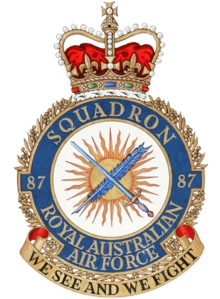
No. 87 Squadron is a Royal Australian Air Force (RAAF) air intelligence squadron. It saw action during World War II as a photo reconnaissance squadron, being raised in September 1944 through the re-designation of No. 1 Photo Reconnaissance Unit, which had been formed in June 1942. Throughout the war, No. 87 Squadron flew a variety of aircraft from bases in Australia, gathering photographic intelligence on Japanese forces and installations throughout the Pacific. At the conclusion of hostilities, the squadron was disbanded but was later re-formed in 1948, carrying out aerial survey operations in Australia until 1953. In 2006, it was re-raised again as a non-flying squadron tasked with air intelligence analysis as part of the Information Warfare Directorate within the RAAF's Air Warfare Centre.

No. 13 Squadron is a Royal Australian Air Force (RAAF) squadron. The unit saw combat during World War II as a bomber and maritime patrol squadron and is currently active as a mixed regular and reserve RAAF unit located in Darwin, fulfilling both operational support and training duties.

Air Force Training Group is the Royal Australian Air Force (RAAF) group responsible for training personnel. It is headquartered at RAAF Williams, Victoria. The group was established as Training Command in 1953. It formed part of Support Command between from 1959 to 1990, when it was re-established as Training Command. In July 2006, Training Command was re-formed as Air Force Training Group under Air Command. Air Force Training Group consists of a headquarters and two Academies: Air Academy and Ground Academy.
No. 3 Security Forces Squadron (3SECFORSQN) was an RAAF Security Forces unit, whose mission was to provide security in support of air and space power assets and infrastructure.
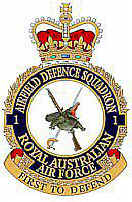
No. 1 Security Forces Squadron (1SECFOR) is a Royal Australian Air Force (RAAF) military unit whose primary role is to protect and secure airfields, buildings, equipment, and personnel.
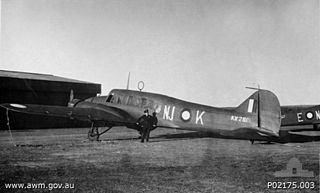
No. 73 Squadron was a Royal Australian Air Force (RAAF) maritime patrol squadron of World War II. It was formed in July 1942 and conducted patrols off the east coast of Australia until July 1944. The squadron was disbanded in September 1944.

No. 464 Squadron RAAF is a Royal Australian Air Force (RAAF) unit responsible for public relations. It was originally formed in the United Kingdom during 1942 as a bomber unit. It comprised personnel from Australia, Britain, Canada, New Zealand, South Africa and the Netherlands, the squadron served in the light bomber role, undertaking operations over France and the Low Countries, from bases in England. It also flew night fighter missions. Later, following the Allied invasion of France, the squadron moved to France where it was used to interdict German transports and infrastructure. It further engaged in several low-level precision raids against Gestapo targets in France and Denmark. The squadron was disbanded in September 1945, following the conclusion of the war. No. 464 Squadron was re-formed in January 2021 when the RAAF's public relations functions were transferred from No. 28 Squadron.

Fairbairn, formerly RAAF Base Fairbairn, is a former Royal Australian Air Force (RAAF) military air base, located in Australia's national capital, Canberra, Australian Capital Territory. Over the years the name of the establishment, and the use of the land, has changed. The base was in use by the RAAF between 1940 and 2007, when the land occupied north and east of the Canberra Airport runways was sold to Capital Airport Pty Limited for the purposes of advancing civil aviation and the development of a business park.

No. 4 Service Flying Training School was a flying training school of the Royal Australian Air Force (RAAF) during World War II. It was formed in February 1941, and commenced flying the following month. Responsible for intermediate and advanced instruction of pilots under the Empire Air Training Scheme (EATS), the school was based at Geraldton, Western Australia, and operated Avro Anson aircraft. Two reserve squadrons were formed in response to the outbreak of war in the Pacific, though they never saw action. Flying activity was reduced towards the end of 1943, and the school was disbanded in May 1945, having graduated over 1,000 pilots. It re-formed as No. 87 Operational Base Unit, which was renamed Care and Maintenance Unit (CMU) Geraldton in May 1946. CMU Geraldton was disbanded in September 1947.
The Australian Defence Force Helicopter School (ADFHS) was an Australian Defence Force unit responsible for training helicopter pilots. It was formed in 1990 and disbanded in 1998.

















